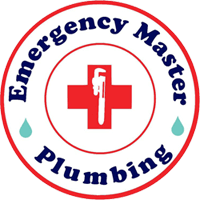

Phoenix homeowners often overlook HVAC winterization because our winters stay mild, with average lows dipping only to the 40s and 50s Fahrenheit. However, even in this desert climate, cooler nights, occasional freezes, and year-round dust can strain your heating, ventilation, and air conditioning system. Neglecting winter prep might lead to inefficient heating, higher energy bills, or unexpected breakdowns when you need warmth the most. This guide walks you through how to winterize your HVAC system in Phoenix step by step, solving common issues like reduced airflow, thermostat glitches, and outdoor unit debris. By following these expert tips, you’ll extend your system’s lifespan, cut costs, and ensure cozy comfort during those chilly evenings.

Whether you’re a DIY enthusiast or prefer professional help, winterizing your HVAC promotes energy efficiency and prevents costly repairs. In Arizona’s dry air, systems work harder to maintain humidity and filter out pollen-heavy winds, so proactive maintenance matters. Let’s dive into why this matters and how to get started.
Why Winterize Your HVAC in Phoenix’s Mild Climate?
Phoenix winters differ from snowy regions, but they still pose unique challenges for HVAC systems. Our mild temperatures—rarely below freezing—don’t trigger heavy heating use, yet sudden cold snaps can catch systems off guard. According to the U.S. Department of Energy, proper seasonal maintenance can improve HVAC efficiency by up to 20%, saving hundreds on utility bills annually.
The Hidden Risks of Skipping Winter Prep
Dust storms and low humidity in Phoenix accelerate wear on components like coils and fans. Without winterization, you risk:
- Reduced Heating Efficiency: Dirty filters block warm air, forcing your furnace or heat pump to overwork.
- Frozen Pipes and Coils: Though rare, dips below 32°F can freeze evaporator coils in heat pumps, leading to cracks.
- Higher Energy Costs: An unmaintained system uses 10-15% more energy, per ENERGY STAR guidelines.
- Indoor Air Quality Issues: Accumulated allergens worsen during closed-window winter months.
By addressing these proactively, you solve problems before they escalate. For instance, a simple filter change prevents 80% of airflow restrictions, keeping your home’s temperature steady without spiking your bills.
Benefits Tailored to Arizona Living
In Phoenix, winterizing focuses on protection rather than heavy insulation. You’ll maintain consistent warmth for those 50°F mornings, reduce strain from dry air, and prepare for spring’s intense heat. Homeowners who winterize report fewer service calls and longer equipment life—up to 15 years for well-maintained units versus 10 for neglected ones.
Step-by-Step Guide to Winterizing Your HVAC System
Follow this comprehensive checklist to winterize your HVAC system in Phoenix. Aim to complete these tasks in late fall, before the first cool front hits. Tools needed: screwdriver, vacuum, lubricant, and a flashlight. If your system is over 10 years old or shows signs of wear, consult a licensed technician for safety.
1. Inspect and Replace Air Filters
Air filters are your HVAC’s first line of defense against Phoenix’s fine desert dust. Clogged filters cause 15-20% efficiency loss, per the EPA.
How to Do It:
- Locate the filter in your return air duct or furnace cabinet—usually a slot near the blower.
- Turn off the power at the thermostat and breaker for safety.
- Remove the old filter and check its MERV rating (8-13 works for most homes; higher for allergy sufferers).
- Vacuum the compartment, then insert a new filter with arrows pointing toward airflow direction.
- Replace every 1-3 months in dusty Phoenix; more if you have pets.
Problem-Solving Tip: If filters clog quickly, install a whole-home air purifier. This solves persistent dust issues, improving air quality and reducing allergy flare-ups common in Arizona’s pollen season.
2. Clean and Check the Thermostat
Your thermostat controls everything, but Phoenix’s variable temps can cause calibration drift, leading to uneven heating.
How to Do It:
- Clean the thermostat with a soft cloth to remove dust—avoid liquids.
- Test settings: Set to “heat” mode and raise to 72°F; ensure the system responds within minutes.
- For programmable models, update schedules for winter (e.g., lower temps overnight to save 5-10% on energy).
- If it’s battery-powered, replace batteries now to prevent failures during cold nights.
Problem-Solving Tip: Inaccurate thermostats waste energy by over-heating empty rooms. Upgrade to a smart thermostat like Nest or Ecobee for remote control and auto-adjustments based on Phoenix’s mild swings—users save up to $131 yearly, according to manufacturer data.
3. Examine Ductwork for Leaks and Blockages
Leaky ducts in older Phoenix homes lose up to 30% of heated air, per the U.S. Department of Energy, driving up costs in our spacious, single-story layouts.

How to Do It:
- Inspect visible ducts in attics, basements, or crawl spaces for cracks, loose joints, or insulation gaps.
- Use a flashlight to check for dust buildup or pests—common in Arizona’s rodent-prone areas.
- Seal small leaks with mastic sealant or foil tape (never duct tape, which degrades).
- For major issues, hire an inspection with a duct blaster test to measure airflow.
Problem-Solving Tip: Blocked vents from furniture or rugs reduce efficiency. Clear them and balance airflow by adjusting dampers—equal pressure prevents one room from overheating while others stay cold, a frequent complaint in Phoenix tract homes.
4. Lubricate Moving Parts and Inspect the Blower
Phoenix’s dry climate dries out motors and bearings, causing squeaks or failures that interrupt heat.
How to Do It:
- Access the blower fan inside the air handler (power off first).
- Apply HVAC-specific oil to ports on the motor and fan bearings—use SAE 10 or manufacturer-recommended lubricant.
- Spin the fan by hand to ensure smooth rotation; listen for unusual noises.
- Clean blades with a brush to remove dust buildup.
Problem-Solving Tip: Noisy blowers signal imbalance from dust weight. Regular lubrication extends motor life by 50%, avoiding $500+ replacement costs. If you’re uncomfortable, pros use specialized tools for thorough checks.
5. Prepare the Outdoor Unit
Even in mild winters, Phoenix winds carry debris to your condenser or heat pump unit, blocking coils and reducing heat transfer.
How to Do It:
- Clear leaves, dirt, and pollen from around the unit—keep a 2-foot clearance.
- Gently hose down fins (power off); use a soft brush for stubborn grime.
- Cover the unit loosely with a breathable tarp to shield from dust storms, but remove it during operation.
- Check electrical connections for corrosion from our alkaline soil.
Problem-Solving Tip: Debris causes 70% of outdoor unit issues. In Phoenix, where monsoons leave residue, this step prevents coil icing during rare freezes, ensuring reliable backup heating.
6. Test and Tune the Heating System
Verify your furnace, heat pump, or boiler works efficiently before winter demands it.
How to Do It:
- Run a full cycle: Set thermostat high and monitor for even heating.
- Check pilot lights (for gas systems) or ignition sequences.
- Listen for unusual sounds; measure airflow at vents (should be 400-600 CFM per ton).
- Adjust belts if loose—tighten to manufacturer’s specs.
Problem-Solving Tip: Short-cycling (system turns on/off rapidly) wastes energy and stresses parts. Clean the flame sensor in gas furnaces to fix this, restoring steady operation and comfort.
7. Additional Phoenix-Specific Tips
- Humidity Control: Arizona’s low humidity (under 30%) dries out HVAC components. Use a humidifier if your system lacks one to prevent static and cracking.
- Insulate Exposed Pipes: Even mild chills can freeze uninsulated lines; wrap with foam sleeves.
- Smart Monitoring: Install CO detectors and schedule annual tune-ups to catch issues early.
These steps take 2-4 hours for most homeowners and solve 90% of winter-related HVAC problems.
Common HVAC Winter Problems in Phoenix and How to Fix Them
Despite mild weather, Phoenix HVAC systems face desert-specific woes. Here’s how to troubleshoot:
- Uneven Heating: Caused by dirty coils or low refrigerant. Solution: Clean coils and call for a recharge—low levels drop efficiency by 25%.
- Strange Noises: Loose parts from vibrations. Solution: Tighten panels and lubricate; persistent rattles need pro balancing.
- High Bills: Often from poor insulation. Solution: Seal windows and add attic insulation rated R-38 for Arizona codes.
- Poor Airflow: Filter or duct issues. Solution: As above, plus fan speed adjustments.
Addressing these early prevents emergencies, like a mid-winter breakdown during a 40°F night.
DIY vs. Professional Winterization: What’s Best for You?
DIY works for basic tasks if you’re handy, saving $100-200. However, for complex systems like variable-speed heat pumps common in Phoenix, professionals ensure compliance with local codes and optimize for energy rebates.
Hire certified techs (NATE or ACCA members) for tune-ups costing $75-150. They use diagnostic tools to spot hidden issues, like refrigerant leaks, that DIY misses.
Final Thoughts on Keeping Your Phoenix Home Comfortable
Winterizing your HVAC system in Phoenix’s mild climate protects your investment and ensures reliable performance. By inspecting filters, sealing ducts, and testing components, you’ll avoid common pitfalls like inefficiency and breakdowns. Start today to enjoy warmer nights without surprises.
For expert assistance with winterizing your HVAC or any repairs, contact Emergency Master Plumbing & Air at 623-584-4706. Our licensed technicians serve Phoenix and surrounding areas, offering tailored maintenance to keep your system running smoothly year-round.
